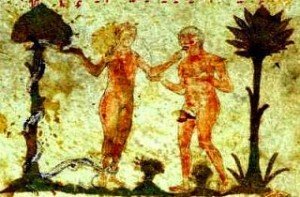
Arquivo para May 2nd, 2017
The Symbolic of Evil
Thirteen centuries after the “conversion” of Augustine of Hippo who changed  Manichaeism through Christianity, the key to reading about “evil” returns to the foreground with one of the greatest hermeneutics of the twentieth century: Paul Ricoeur (1913-2005).
Manichaeism through Christianity, the key to reading about “evil” returns to the foreground with one of the greatest hermeneutics of the twentieth century: Paul Ricoeur (1913-2005).
His extensive philosophical work with about 30 books, in addition to lectures and interviews, takes up the issue of evil, which for Augustine of Hippo is the “absence of good” and will discuss the presence of evil through the “symbolic” of evil.
The hermeneutics of Ricoeur keeps the tradition phenomenology, but it searches in original ways and distances of prejudices reaching unpublished sources and unusual readings.
For Ricoeur one can only access the human being in a mediated way, through his symbols and myths, something ignored by the spiritual “dryness” of modern thought.
For him, while Hegelian Idealism (which purported to be a “Phenomenology of the Spirit”) that reduced man to spirit and Positivism to the state of object, the “thing” and therefore married well with materialism.
The task of hermeneutic phenomenology has the task of recovering what has fallen into oblivion, that is, “going back to things” as Husserl put it, and founding a “true philosophy”, but Ricoeur will also discover the insufficiency of phenomenology.
What is accessible in access to itself is a world that lacks interpretation, for it is symbolic, in the sense that it is a conscience directed towards something, but that it must also turn to what is meaning, a world of meanings, Which should before returning to self-understanding.
The development of this symbolic is what Ricoeur will call the “long way”, not in opposition to the short path of the mystics, which is Agapic Love, but in opposition to the hermeneutic Gadamer calls Dilthey’s Romantic, and that in the case of Ricoeur is
Search for a “long way”, has ontology as a horizon, to arrive at the understanding of being is necessary to pass through the analysis of languages, understanding of signs, symbols and their reflection. The reason why Ricoeur does not accept this inversion proposed by Heidegger, although he disagrees with Heidegger, since his symbolic hermeneutics also has the ontology as a horizon, but that it does it through the mediation of the conflict and of the different interpretations of the things “in Yes “.
For Ricoeur, symbol and interpretation become related concepts: “there is interpretation where there is multiple sense, and it is in the interpretation that the plurality of the senses is manifest” (RICOEUR, 2013).
But for him the symbol is more than a sign “because it is in the place of” in a different way, expressed by it as follows:
“I call a symbol to any structure of signification in which a direct, primary, literal meaning appoints another indirect, secondary, figurative meaning which can only be apprehended through the former. (RICOEUR, 2013).
Gradually, we will penetrate this “symbolic of evil” aided by Ricoeur, to understand how this still hinders the walking that is ontological of humanity, but the interpretation of the ways and the understanding of the paths of consciousness.
RICOEUR, P. The symbolic of evil. USA; Harper & Row, 1967, 357 p.

